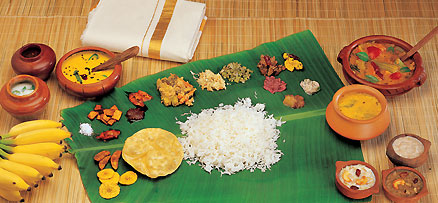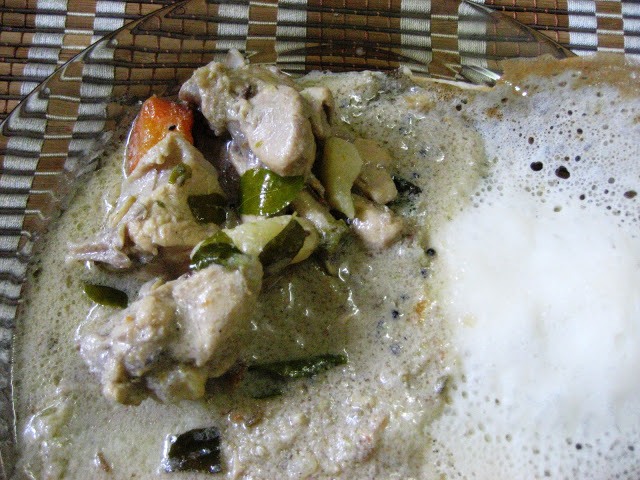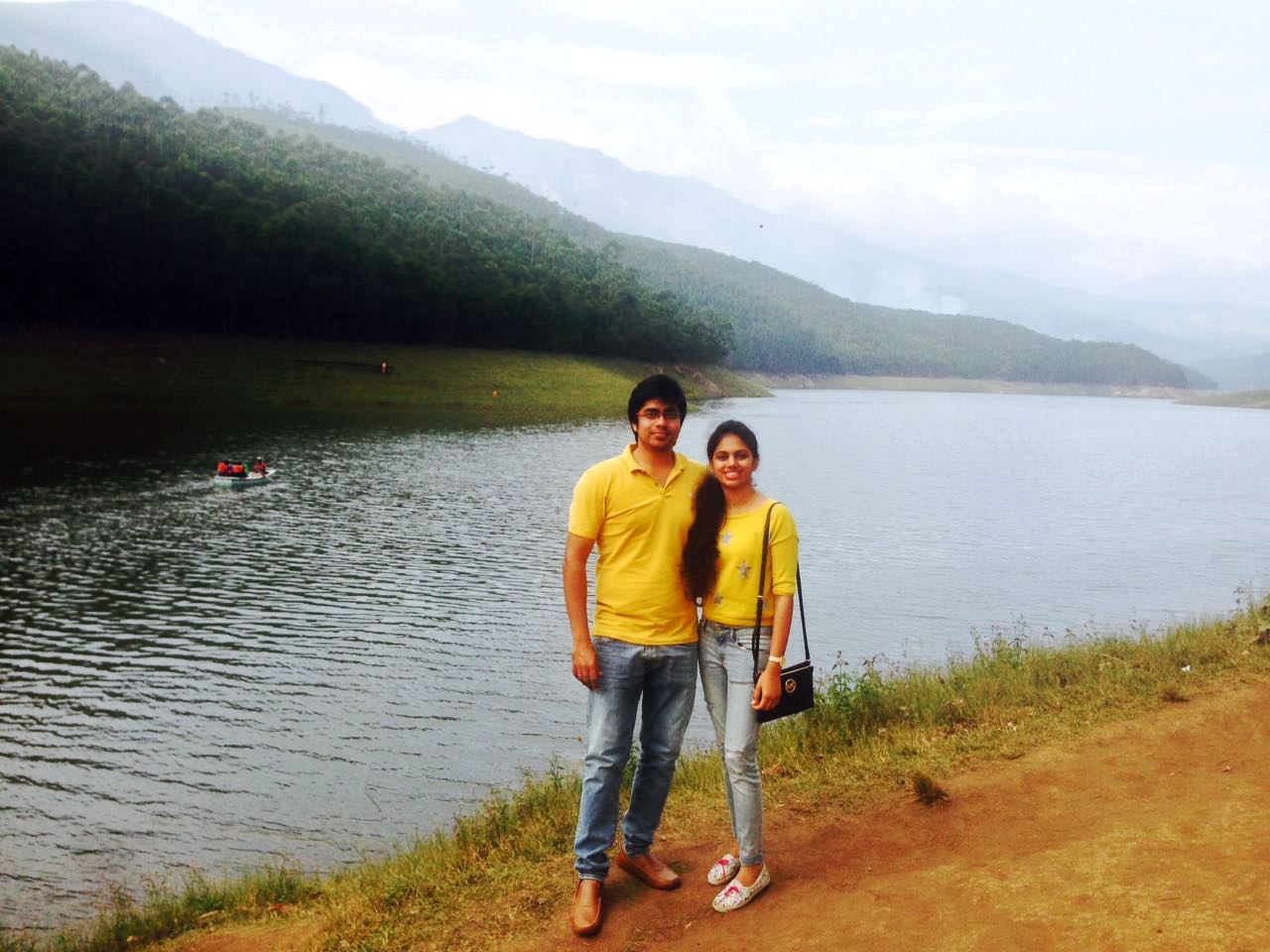Kerala Cuisine

Kerala Sadya
Sadya
Sadya is the traditional vegetarian feast of Kerala. Usually served as lunch, it consists of par boiled pink rice, side dishes, savouries, pickles and desserts spread out on a plantain leaf. Tradition insists that the tapering end of the leaf points to the left of the seated guest. Rice is served on the lower half of the leaf.
The feast begins with the serving of Parippu, a liquid curry made of small gram and ghee. The second course is Sambar, the famous South Indian vegetable stew in which any available combination of vegetables is boiled in a gravy of crushed lentils, onions, chillies, coriander and turmeric and with a pinch of asafoetida.
Avial, an unavoidable side dish is a blend of vegetables, coconut paste and green chillies. It is seasoned with a spoonful of fresh coconut oil and some raw curry leaves stirred in immediately after the dish is taken off the stove.
Some of the other important side dishes include Thoran, and Olan. Thoran can be minced string beans, cabbage, radish or grams, mixed with grated coconut and sautèed with a dash of red chillies and turmeric powder. Olan is a bland dish of pumpkin and red grams cooked in thin gravy of coconut milk.
The savouries include Upperi, Pappadam, Ginger pickle, Pachadi and Kichadi. Upperi is deep fried banana chips. Pappadams are fried creamy yellow, sun-dried wafer of black gram flour. The Ginger pickle is a rich brown, hot and sweet ginger chutney while the Kichadi consists of sliced and sautèed cucumber or ladies finger in curd, seasoned with mustard, red chillies and curry leaves in coconut oil. Pickles are usually mango and lime.
Desserts are served mid-way through the meal. The Payasam is a thick fluid dish of sweet brown molasses, coconut milk and spices, garnished with cashew nuts and raisins. There could be a succession of Payasams, such as the Palada Pradhaman and Parippu Pradhaman.
Pazham, a ripe golden yellow plantain, is usually had along with the payasams. After the payasams, rice is served once more with the spicy Rasam. Rasam is a mixture of chilly and peppercorn powders boiled in diluted tamarind juice. Kaalan, seasoned buttermilk with turmeric powder and green chillies, and plain sour buttermilk that comes salted and with chopped green chillies and ginger, are also served before the feast is finally wound up.
 Appam and Chicken Stew
Appam and Chicken Stew
Ingredients for Appam
Raw Rice – ½ kg
Coconut (grated) – 1 full
Yeast – ½ tsp
Salt – to taste
Sugar – 3 tsp
Cooked rice – ½ cup
Method of preparation – Appam
Soak rice for about four hours and drain the water completely. Take the cooked rice and grind it with grated coconut in a mixer. Put yeast, salt and sugar in boiled water and keep it for half-an- hour. Add this to the grounded mixture. Keep the mixture for eight hours to ferment. Spread the mixture thickly on a non-stick pan. Spread it around a bit.
Remove the appam from the pan and serve it hot. You may try this ideally with chicken stew.
Ingredients for Chicken Stew
Chicken piece – ½ kg
Potato – 1
Big onion – 2
Carrot – 1 big
Green chilli – 5 no.
Garlic – 8 flakes
Ginger – 1 piece
Cinnamon – 2 sticks
Cloves – 4 no.
Cardamom – 3 no.
Bay leaf – 1
Curry leaves
Coriander leaves
Coconut oil – 3 tsp
Thick coconut milk – 1 cup
Crushed pepper – ½ tsp
Method of preparation – Chicken Stew
Cut chicken, onions and carrots into cubes. Heat two teaspoons of coconut oil in a pressure cooker. Put clove, cinnamon and cardamom. Stir a bit. Now add to this garlic and ginger, followed by onions, carrots, potatoes and green chillies. Again stir a bit. You may now add the chicken pieces. Stir again. Add bay leaf. Pour half-a-cup of water. Now close the lid and cook for three minutes. Remove the lid and shift the contents into a sauce pan. Stir a bit. Now add salt, crushed pepper, curry leaves and coriander leaves. Stir well. Add the thick coconut milk and a little amount of oil. Stir well and cook for about two minutes. Finally garnish it with curry leaves.
Your chicken stew is now ready. It combines well with hot appams.


 Appam and Chicken Stew
Appam and Chicken Stew
















